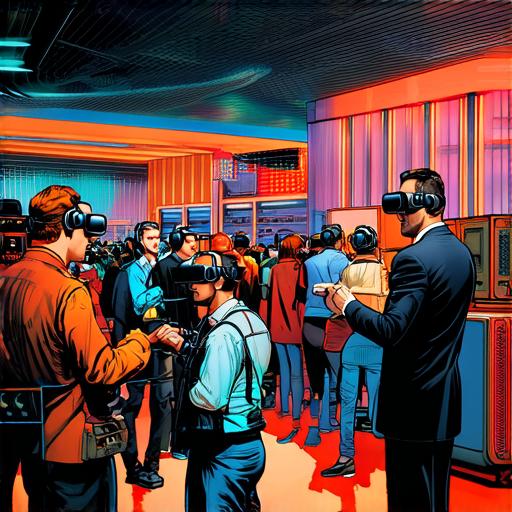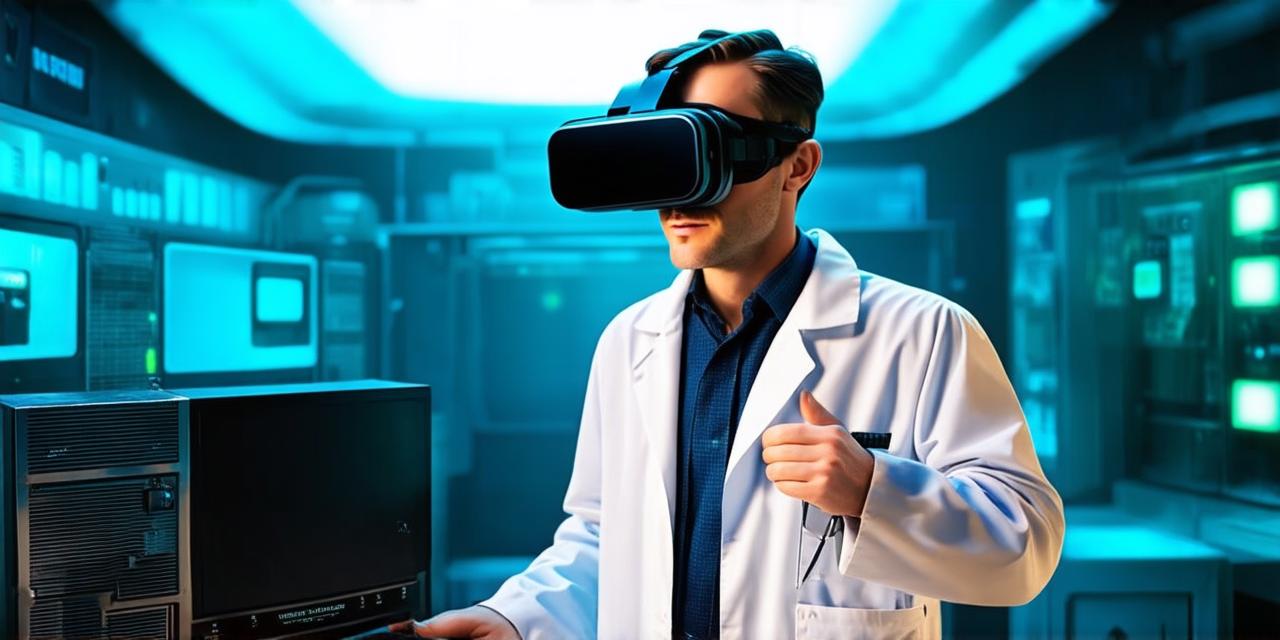Virtual reality (VR) technology has come a long way since its inception, with early pioneers experimenting with immersive experiences as far back as the 1950s. In this timeline, we will explore the key milestones and developments that have shaped VR’s evolution, from its humble beginnings to its current status as a rapidly growing industry.

Early Experiments (1950s-1960s)
The concept of immersive experiences can be traced back to the 1950s when researchers began experimenting with stereoscopic displays, which create an illusion of depth by presenting two slightly different perspectives. One notable example is the work of Ivan Sutherland, a computer scientist who created “Skybook” in 1968, one of the first VR systems to use a head-mounted display (HMD).
Sutherland’s Skybook was a simple device that used two monitors mounted on a frame that the user wore on their head. The displays showed slightly different perspectives of a virtual environment, creating an illusion of depth and immersion. While Skybook was limited in its capabilities, it laid the groundwork for future VR systems.
The First VR Headset (1970s)
In 1972, a team of researchers at the University of Utah created the first VR headset, known as the “Sword of Damocles.” This early HMD was bulky and unwieldy, but it paved the way for future advancements in VR technology. The Sword of Damocles consisted of a large, boxy device with two screens that were mounted on poles above the user’s head.
While the Sword of Damocles was not very practical or comfortable to use, it demonstrated the potential of VR technology and inspired further research in the field.
The Birth of Modern VR (1980s-1990s)
The 1980s saw the development of more sophisticated VR systems, such as the “Head-Mounted Display” (HMD) and the “Data Gloves.” These advancements enabled users to interact with virtual environments in a more immersive way. One notable example is the work of Jaron Lanier, a computer scientist who coined the term “virtual reality” in 1983.
Lanier’s work focused on creating more realistic and interactive virtual environments that could be used for training simulations and other applications. He developed a prototype of what would become the first modern VR headset, which used a simple HMD to display stereoscopic images.
The Turning Point (2000s)
The turn of the millennium saw significant advancements in VR technology, driven by improvements in computing power and graphics capabilities. This led to the development of more realistic and interactive virtual environments, such as those used in gaming and training simulations. One example is the launch of Oculus VR in 2012, which revolutionized the VR industry with its high-quality displays and advanced tracking technology.
Oculus VR’s success was due in part to its ability to provide a more immersive experience than previous VR systems. The Oculus Rift used a high-resolution display that created a more realistic visual experience, while also incorporating advanced tracking technology that allowed users to move and interact with virtual objects in a more natural way.
The Rise of Augmented Reality (AR) (2010s)
While VR has remained at the forefront of immersive technology, augmented reality (AR) has also gained traction in recent years. AR technology overlays digital information onto the real world, allowing users to interact with virtual objects and environments in a more seamless way. One example is the success of Pokemon Go, which used AR technology to bring the popular game to life in the real world.
Pokemon Go was launched in 2016 and quickly became a cultural phenomenon, with millions of people downloading the app and searching for virtual creatures in their surroundings. The app’s use of AR technology made it possible to create an immersive gaming experience that blended the real world with the digital world.
Current Developments and Future Prospects
Today, VR technology continues to advance at a rapid pace, with new innovations emerging all the time. One area of particular interest is haptic feedback, which involves providing users with tactile sensations in virtual environments. Haptic feedback can make virtual experiences feel more realistic and immersive, and is being explored for use in areas such as gaming, training simulations, and even therapy.
Another area of development is spatial audio, which involves creating a three-dimensional soundscape that can be used to enhance the immersion of VR experiences. Spatial audio technology is still in its early stages, but it has the potential to make virtual environments feel even more realistic and engaging.
Overall, the future of VR technology looks promising, with advancements in areas such as haptic feedback and spatial audio set to create even more immersive and interactive experiences. While there are still challenges to overcome, such as motion sickness and high costs, VR technology has already had a significant impact on various industries and is likely to continue to shape the way we interact with technology in the years come.
